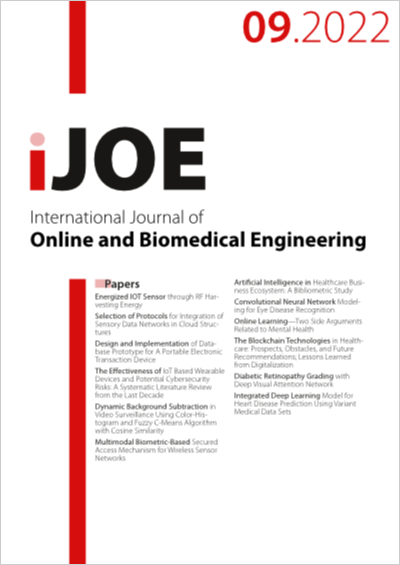The Effectiveness of IoT Based Wearable Devices and Potential Cybersecurity Risks: A Systematic Literature Review from the Last Decade
DOI:
https://doi.org/10.3991/ijoe.v18i09.32255Keywords:
wearable devices, IoT, cybersecurity, smart applications, blockchains, healthcareAbstract
Wearable technology has enormous promise, particularly for data collection for cutting-edge health research, and its popularity has soared in recent years. This study aims to provide IoT-based wearable devices' effectiveness and potential cybersecurity threats to these innovative technologies. Using the PRISMA-2020 (Preferred Reporting Items for Systematic Reviews and Meta-Analyses) methodology, we conducted a scoping study to understand better the application of inexpensive, consumer-grade wearables for health research from a population health viewpoint. Scopus databases yielded a total of 43 articles. Our findings show that academics and research participants are tremendously interested in this technology, but they are also wary about using wearables. These devices are still vulnerable to cybersecurity assaults such as data privacy and security in healthcare. However, blockchain technology is a potential alternative for integrating with IoT-based wearables to ensure data privacy. Furthermore, according to the findings, wearables have an increasingly diverse range of applications, including COVID-19 prediction, fertility tracking, heat-related sickness, pharmacological effects, and psychological therapies; they also include underrepresented populations, such as those with rare diseases. In low-resource environments, there is a lack of research on wearable devices.
Downloads
Published
How to Cite
Issue
Section
License
Copyright (c) 2022 Mohd Fazli Mohd Sam, Albert Feisal Muhd Feisal Ismail, Kamarudin Abu Bakar, Amiruddin Ahamat, Muhammad Imran Qureshi

This work is licensed under a Creative Commons Attribution 4.0 International License.



